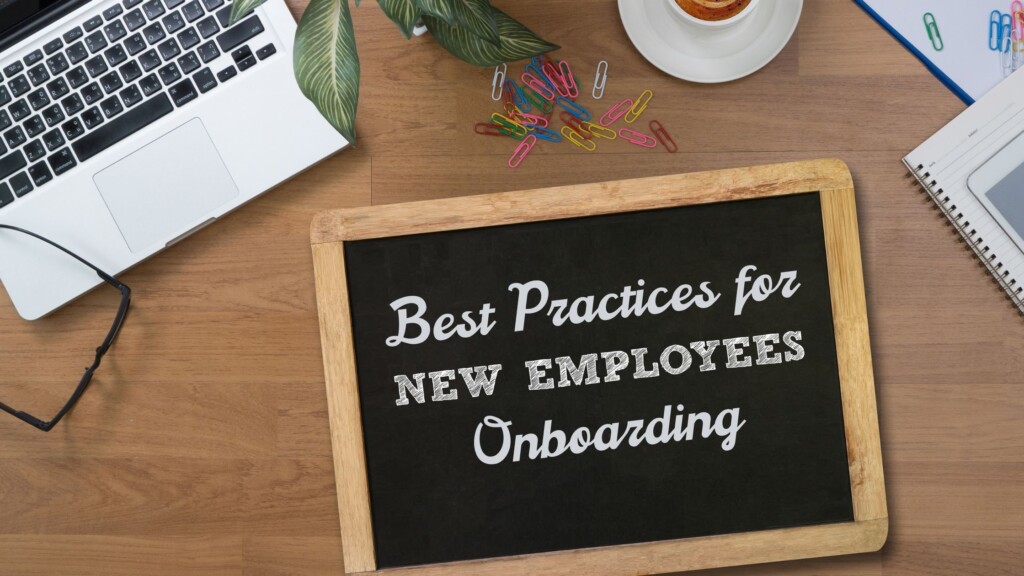BEST PRACTICES FOR EMPLOYEE ONBOARDING:
Retaining Employees Requires More Work than Finding Them
When an organization hires a new employee, it takes months or even years for them to become fully functioning members of the team. This probationary period is an inevitable part of the hiring process, but it also means production isn’t operating at full capacity until the employee is stable enough to fully perform. As the old age saying goes “time is money”, this is often something employers can’t afford.
NEW HIRE ONBOARDED QUICKLY AND EFFICIENTLY
The first key step to employee retention is by providing new hires with a smooth onboarding process. This will not only make it easier on you, but also give new employees an opportunity for success that they may have lacked at their previous place of employment–and this benefits both parties in some very tangible ways!
When it comes to designing your organizations onboarding process, it’s overwhelming to know where to start. We’ve outlined four crucial steps that every organization should begin implementing.
Top 4 Best Practices Firms Can Use In Order Get Their New Hire On Board Quickly And Efficiently!
1. MOVING TO THE CLOUD
Forward-thinking companies are using the cloud to set employees up for success from day one. Cloud storage is easy to setup, straightforward to use, and a secure way to keep your organizations documents from SOPs, to handbooks, marketing collateral, and more.
Organizations should make sure that they are well prepared and have everything in order for their employees first day. On the job training is an essential part onboarding, but showing a new hire how to access the cloud and where documents are stored as a central hub to the company’s resources should be a vital part of the orientation. Organizations should consider documenting a process for employees to review independently and storing within the cloud. Such processes could include video or written tutorials, checklists, company values, and other resources.
This will allow them to learn at their own pace and remotely if needed without feeling overwhelmed, offer time for seasoned employees to catch up on work in-between trainings, and provide a resource for employees to go back and reference again in the future.
2. Assign A MENTOR
One of the most isolating and discouraging parts about starting a new job is feeling like you don’t know as much as your colleagues and are unsure of who to trust with your questions.
Providing a mentorship program, is one way to provide an invaluable resource to your new hires. Studies have shown that mentorship programs have a great impact on employee retention. New hires feel welcome, they establish trusting relationships with their mentor and peers, and feel more satisfied with their job. Mentor programs also provide the added benefit of shortening the probationary period as new employees learn their responsibilities more quickly and perform more efficiently than independent learning or single-occurrence training. Seasoned employees who are selected as mentors also feel valued by their employer and in turn decreases turnover.
3. DEVELOP CULTURAL TRAINING
Develop a company culture in which employees are empowered and engaged will lead to better business outcomes.
One important way of harboring this type of environment is by actively listening, focus building a relationship with employees and encouraging a team effort mentality.
To define your company culture, start by documenting your organization’s core values, mission, and key strategies. Then establish the behaviors that support that culture, build programs which will reward those behaviors, and have leadership champion the culture to drive change. A leading reason for employee dissatisfaction with their employer is often due to poor company culture. Taking the necessary steps to improve and maintain your organization’s culture will provide a maximum payoff.
4. SETTING EXPECTATIONS AND PROVIDING FEEDBACK
Companies must provide clear and concise policies and expectations for all employees, new or not. Providing a well-rounded onboarding process is an opportunity for new hires to get established, fully understand their employers expectations and the company culture, and learn their role and responsibilities within the organization. Offering an employee handbook, job descriptions, and well-documented processes and procedures are beneficial in conveying clear communication and instruction.
Feedback is vital to fostering employee growth and reinforcing responsibilities. Organizations should consider establishing periodic “checkpoint” reviews for new employees, such as 30 days, 60 days, 90 days and 6months after their first day of work. Supervisors, managers, and mentors should provide constructive criticism and praise during these reviews so new hires know where more effort should be directed, what goals they’ve been assigned, and their successes. Without adequate feedback, improvement will not be achieved and operations will not be performing at a an efficient capacity.
ENGAGED EMPLOYERS PRODUCE ENGAGED EMPLOYEES!
The key to successful onboarding is developing the resources that your employees will find valuable and accelerate their growth and knowledge of the company.
Employees who feel their employers invest in them are more engaged and stay employed with the organization longer.
When employers experience less turnover and expedite the orientation process of their employees, they will reap the rewards of a high-functioning organization.









